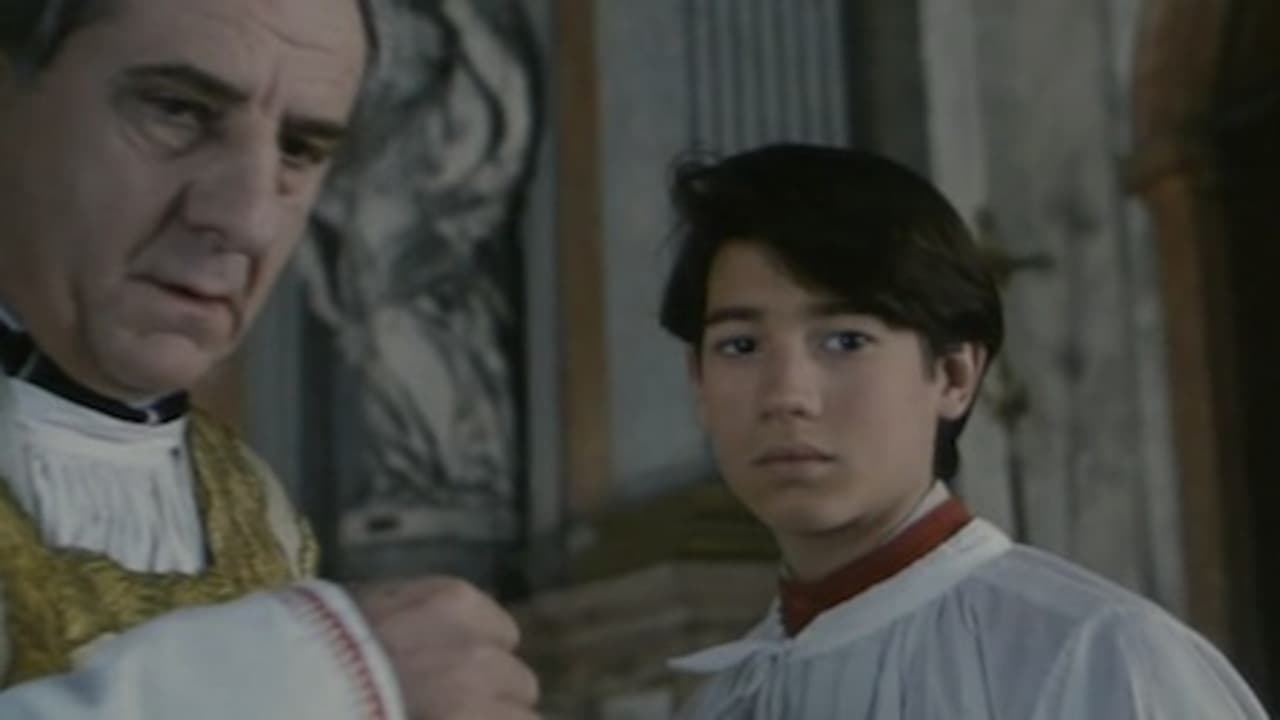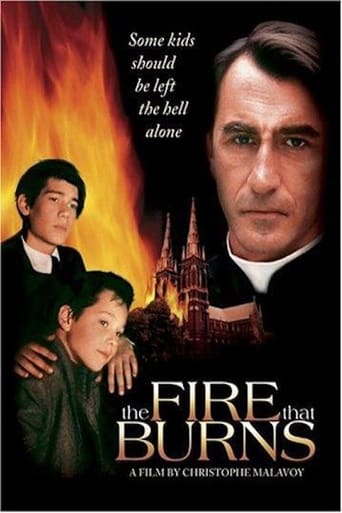

This is one of those badly made films that pretends to be about something (what, I don't know), but ends up being a tedious, bloated boor. In fact, the last 20 minutes of the 'film' are taken up by a dialog between 2 priests in which neither says anything of any interest to anyone. Yes, the central story is about a gay 'friendship' between 2 boys, but with no explanation as to why there is any attraction between the two. Yes there is a kiss between the two, but that's the only bit of physical contact. And of course, all the priests are pedophiles (not gay) which is the only realistic thing about this film and pseudo-sadists. And there is, mercifully, no mention of god or Christ or religion, even though this is a film about a Catiolic boys' school. And, unfortunately the two adult actors are quite poor. All in all this is a scattered, nihilistic, extremely dull mess of a film with little, if anything to recommend it. Don't waste your time.
... View MoreA combination of Bad Education and Les Amities Particulieres in that it involves a triangle of two students at a religious boarding school in 1950's France and a priest who views the older one as a rival. That an older boy or a priest would love a boy is a subject not only tolerated but openly discussed, accepted, and philosophized about to a point that would be impossible in this day and age. It is truly remarkable in that respect.One would think it would be a tender man who would fall in love with a boy, but the priest shows himself to be quite the emotional sadist. His straying from God's work is brought to light by the Superior who has been observing all along. How is it possible such a man could stray so far is something we are left wondering in an appropriately unsatisfying ending. It is nevertheless highly recommended.Excellent performance by the older boy Sevrais (Nael Marandin) and the evil, boy-loving priest de Pradts (Christophe Malavoy).
... View MoreTHE FIRE THAT BURNS may seem like an odd title for this French film originally titled LE VILLE Don't LE PRINCE EST UN Infant ("The Land Where the King is a Child") - until the final scene. But such idiosyncrasies abound in this story set in Paris and at times the blend of surrealism, nascent passion, mysticism, philosophy, and ecclesiastic order makes this film feel like visual and cerebral flights of fancy. The trip is worth it! Abbot de Pradts (Christophe Melavoy, who also directs) is a handsome, sensitive priest in a Catholic boys school in Paris, a school whose boys live both on-campus or at home. de Pradts has taken under his wing a poor, beautiful young boy Souplier (Clement van der Bergh) whose studies suffer and who is somewhat of a behavior problem. Souplier thrives on the attention paid him by de Pradts, but is more focused on another older student Sevrais (Nael Marandin) with whom he spends time skipping classes, exploring, and actually loving: the very pure and lovely love affair between these two lads is beautifully captured by both the actors and the director. It is not long before de Pradts feels jealousy for the influence of Sevrais on Souplier, and eventually de Pradts finds a way to remove Servais from the school. This of course results in his demanding that Souplier forsake Sevrais and the results of this demand constitute the finale of the film best saved for the viewer to discover. Though the suggestion of de Pradts' physical attraction to Souplier is sub rosa, the head of the school Father Superior (Michel Aumont) observes the dynamics and in a visceral confrontation between the two priests probes the meaning of sacred vs. profane love. The sublime intelligence of this duet is some of the best writing ever for film on this difficult subject and both Malavoy and Aumont give performances of great power and depth."The Fire That Burns" is that passion within the soul that can lead to evil if not sublimated. de Pradts has fallen victim to that fire and allowed 'the child to be the king of his land'. This is a powerful movie, graced with stunning sets and photography, and a score that is based on Gounod's music ('Kyrie eleison') throughout. Highly recommended. Grady Harp, November 2004
... View MoreThis story of a priest scrutinizing the close friendship of two young boys in a highly-religious, regulated catholic school, was well treated and in tune with the author's book. The poised and repressed sentiments lead to a slow, uneventful movie that succeeds however in getting its point across. A nice tableau of a time not so far away.
... View More